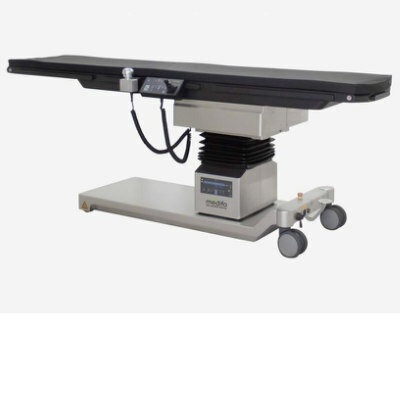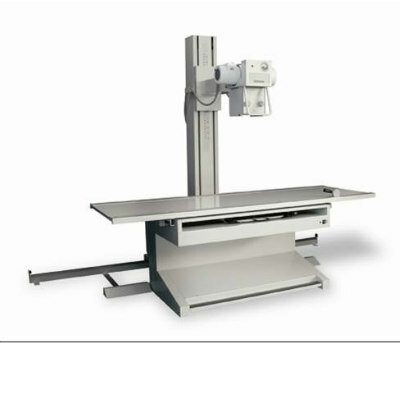New AI Tool Helps Detect Brain Aneurysms On CT Angiography Exams
|
By MedImaging International staff writers Posted on 24 Jun 2019 |

Image: In this brain scan, the location of an aneurysm is indicated by HeadXNet using a transparent red highlight (Photo courtesy of Allison Park).
Researchers from Stanford University (Stanford, CA, USA) have developed an artificial intelligence (AI) tool that can help radiologists improve their diagnoses of brain aneurysms by highlighting the areas of a brain scan that are likely to contain an aneurysm.
To overcome the inherent challenges of complex neurovascular anatomy and potential fatal outcome of a missed aneurysm, the researchers focused on creating an AI tool that could accurately process large stacks of 3D images and complement clinical diagnostic practice. The tool is built around an algorithm called HeadXNet which was trained by outlining clinically significant aneurysms detectable on 611 computed tomography (CT) angiogram head scans. The researchers focused on its ability to identify the presence aneurysms rather than on detecting their absence.
Following the training, the algorithm decides for each voxel of a scan whether there is an aneurysm present. As a result of the HeadXNet tool, the algorithm’s conclusions overlaid as a semi-transparent highlight on top of the scan. This representation of the algorithm’s decision allows clinicians to also see what the scans look like without HeadXNet’s input. HeadXNet was tested by eight clinicians who evaluated a set of 115 brain scans for aneurysm, once with the help of HeadXNet and once without. With the tool, the clinicians correctly identified more aneurysms, thereby reducing the “miss” rate, and were more likely to agree with one another. HeadXNet did not influence the time it took for the clinicians to decide on a diagnosis or their ability to correctly identify scans without aneurysms.
“There’s been a lot of concern about how machine learning will actually work within the medical field,” said Allison Park, a Stanford graduate student in statistics and co-lead author of the paper published in JAMA Network Open. “This research is an example of how humans stay involved in the diagnostic process, aided by an artificial intelligence tool.”
HeadXNet’s success in these experiments is promising and the machine learning methods at its heart could likely be trained to identify other diseases inside and outside the brain. For example, the researchers imagine a future version could focus on speeding up identifying aneurysms after they have burst, saving precious time in an urgent situation. However, the researchers have cautioned that further investigation is needed to evaluate generalizability of the AI tool prior to real-time clinical deployment due to differences in scanner hardware and imaging protocols across different hospital centers.
“Because of these issues, I think deployment will come faster not with pure AI automation, but instead with AI and radiologists collaborating,” said Andrew Ng, adjunct professor of computer science and co-senior author of the paper who leads Stanford’s Machine Learning Group. “We still have technical and non-technical work to do, but we as a community will get there and AI-radiologist collaboration is the most promising path.”
Related Links:
Stanford University
To overcome the inherent challenges of complex neurovascular anatomy and potential fatal outcome of a missed aneurysm, the researchers focused on creating an AI tool that could accurately process large stacks of 3D images and complement clinical diagnostic practice. The tool is built around an algorithm called HeadXNet which was trained by outlining clinically significant aneurysms detectable on 611 computed tomography (CT) angiogram head scans. The researchers focused on its ability to identify the presence aneurysms rather than on detecting their absence.
Following the training, the algorithm decides for each voxel of a scan whether there is an aneurysm present. As a result of the HeadXNet tool, the algorithm’s conclusions overlaid as a semi-transparent highlight on top of the scan. This representation of the algorithm’s decision allows clinicians to also see what the scans look like without HeadXNet’s input. HeadXNet was tested by eight clinicians who evaluated a set of 115 brain scans for aneurysm, once with the help of HeadXNet and once without. With the tool, the clinicians correctly identified more aneurysms, thereby reducing the “miss” rate, and were more likely to agree with one another. HeadXNet did not influence the time it took for the clinicians to decide on a diagnosis or their ability to correctly identify scans without aneurysms.
“There’s been a lot of concern about how machine learning will actually work within the medical field,” said Allison Park, a Stanford graduate student in statistics and co-lead author of the paper published in JAMA Network Open. “This research is an example of how humans stay involved in the diagnostic process, aided by an artificial intelligence tool.”
HeadXNet’s success in these experiments is promising and the machine learning methods at its heart could likely be trained to identify other diseases inside and outside the brain. For example, the researchers imagine a future version could focus on speeding up identifying aneurysms after they have burst, saving precious time in an urgent situation. However, the researchers have cautioned that further investigation is needed to evaluate generalizability of the AI tool prior to real-time clinical deployment due to differences in scanner hardware and imaging protocols across different hospital centers.
“Because of these issues, I think deployment will come faster not with pure AI automation, but instead with AI and radiologists collaborating,” said Andrew Ng, adjunct professor of computer science and co-senior author of the paper who leads Stanford’s Machine Learning Group. “We still have technical and non-technical work to do, but we as a community will get there and AI-radiologist collaboration is the most promising path.”
Related Links:
Stanford University
Latest Industry News News
- Bayer and Google Partner on New AI Product for Radiologists
- Samsung and Bracco Enter Into New Diagnostic Ultrasound Technology Agreement
- IBA Acquires Radcal to Expand Medical Imaging Quality Assurance Offering
- International Societies Suggest Key Considerations for AI Radiology Tools
- Samsung's X-Ray Devices to Be Powered by Lunit AI Solutions for Advanced Chest Screening
- Canon Medical and Olympus Collaborate on Endoscopic Ultrasound Systems
- GE HealthCare Acquires AI Imaging Analysis Company MIM Software
- First Ever International Criteria Lays Foundation for Improved Diagnostic Imaging of Brain Tumors
- RSNA Unveils 10 Most Cited Radiology Studies of 2023
- RSNA 2023 Technical Exhibits to Offer Innovations in AI, 3D Printing and More
- AI Medical Imaging Products to Increase Five-Fold by 2035, Finds Study
- RSNA 2023 Technical Exhibits to Highlight Latest Medical Imaging Innovations
- AI-Powered Technologies to Aid Interpretation of X-Ray and MRI Images for Improved Disease Diagnosis
- Hologic and Bayer Partner to Improve Mammography Imaging
- Global Fixed and Mobile C-Arms Market Driven by Increasing Surgical Procedures
- Global Contrast Enhanced Ultrasound Market Driven by Demand for Early Detection of Chronic Diseases
Channels
Radiography
view channel
Novel Breast Imaging System Proves As Effective As Mammography
Breast cancer remains the most frequently diagnosed cancer among women. It is projected that one in eight women will be diagnosed with breast cancer during her lifetime, and one in 42 women who turn 50... Read more
AI Assistance Improves Breast-Cancer Screening by Reducing False Positives
Radiologists typically detect one case of cancer for every 200 mammograms reviewed. However, these evaluations often result in false positives, leading to unnecessary patient recalls for additional testing,... Read moreMRI
view channel
PET/MRI Improves Diagnostic Accuracy for Prostate Cancer Patients
The Prostate Imaging Reporting and Data System (PI-RADS) is a five-point scale to assess potential prostate cancer in MR images. PI-RADS category 3 which offers an unclear suggestion of clinically significant... Read more
Next Generation MR-Guided Focused Ultrasound Ushers In Future of Incisionless Neurosurgery
Essential tremor, often called familial, idiopathic, or benign tremor, leads to uncontrollable shaking that significantly affects a person’s life. When traditional medications do not alleviate symptoms,... Read more
Two-Part MRI Scan Detects Prostate Cancer More Quickly without Compromising Diagnostic Quality
Prostate cancer ranks as the most prevalent cancer among men. Over the last decade, the introduction of MRI scans has significantly transformed the diagnosis process, marking the most substantial advancement... Read moreUltrasound
view channel
Deep Learning Advances Super-Resolution Ultrasound Imaging
Ultrasound localization microscopy (ULM) is an advanced imaging technique that offers high-resolution visualization of microvascular structures. It employs microbubbles, FDA-approved contrast agents, injected... Read more
Novel Ultrasound-Launched Targeted Nanoparticle Eliminates Biofilm and Bacterial Infection
Biofilms, formed by bacteria aggregating into dense communities for protection against harsh environmental conditions, are a significant contributor to various infectious diseases. Biofilms frequently... Read moreNuclear Medicine
view channel
New SPECT/CT Technique Could Change Imaging Practices and Increase Patient Access
The development of lead-212 (212Pb)-PSMA–based targeted alpha therapy (TAT) is garnering significant interest in treating patients with metastatic castration-resistant prostate cancer. The imaging of 212Pb,... Read moreNew Radiotheranostic System Detects and Treats Ovarian Cancer Noninvasively
Ovarian cancer is the most lethal gynecological cancer, with less than a 30% five-year survival rate for those diagnosed in late stages. Despite surgery and platinum-based chemotherapy being the standard... Read more
AI System Automatically and Reliably Detects Cardiac Amyloidosis Using Scintigraphy Imaging
Cardiac amyloidosis, a condition characterized by the buildup of abnormal protein deposits (amyloids) in the heart muscle, severely affects heart function and can lead to heart failure or death without... Read moreGeneral/Advanced Imaging
view channel
New AI Method Captures Uncertainty in Medical Images
In the field of biomedicine, segmentation is the process of annotating pixels from an important structure in medical images, such as organs or cells. Artificial Intelligence (AI) models are utilized to... Read more.jpg)
CT Coronary Angiography Reduces Need for Invasive Tests to Diagnose Coronary Artery Disease
Coronary artery disease (CAD), one of the leading causes of death worldwide, involves the narrowing of coronary arteries due to atherosclerosis, resulting in insufficient blood flow to the heart muscle.... Read more
Novel Blood Test Could Reduce Need for PET Imaging of Patients with Alzheimer’s
Alzheimer's disease (AD), a condition marked by cognitive decline and the presence of beta-amyloid (Aβ) plaques and neurofibrillary tangles in the brain, poses diagnostic challenges. Amyloid positron emission... Read more.jpg)
CT-Based Deep Learning Algorithm Accurately Differentiates Benign From Malignant Vertebral Fractures
The rise in the aging population is expected to result in a corresponding increase in the prevalence of vertebral fractures which can cause back pain or neurologic compromise, leading to impaired function... Read moreImaging IT
view channel
New Google Cloud Medical Imaging Suite Makes Imaging Healthcare Data More Accessible
Medical imaging is a critical tool used to diagnose patients, and there are billions of medical images scanned globally each year. Imaging data accounts for about 90% of all healthcare data1 and, until... Read more



















